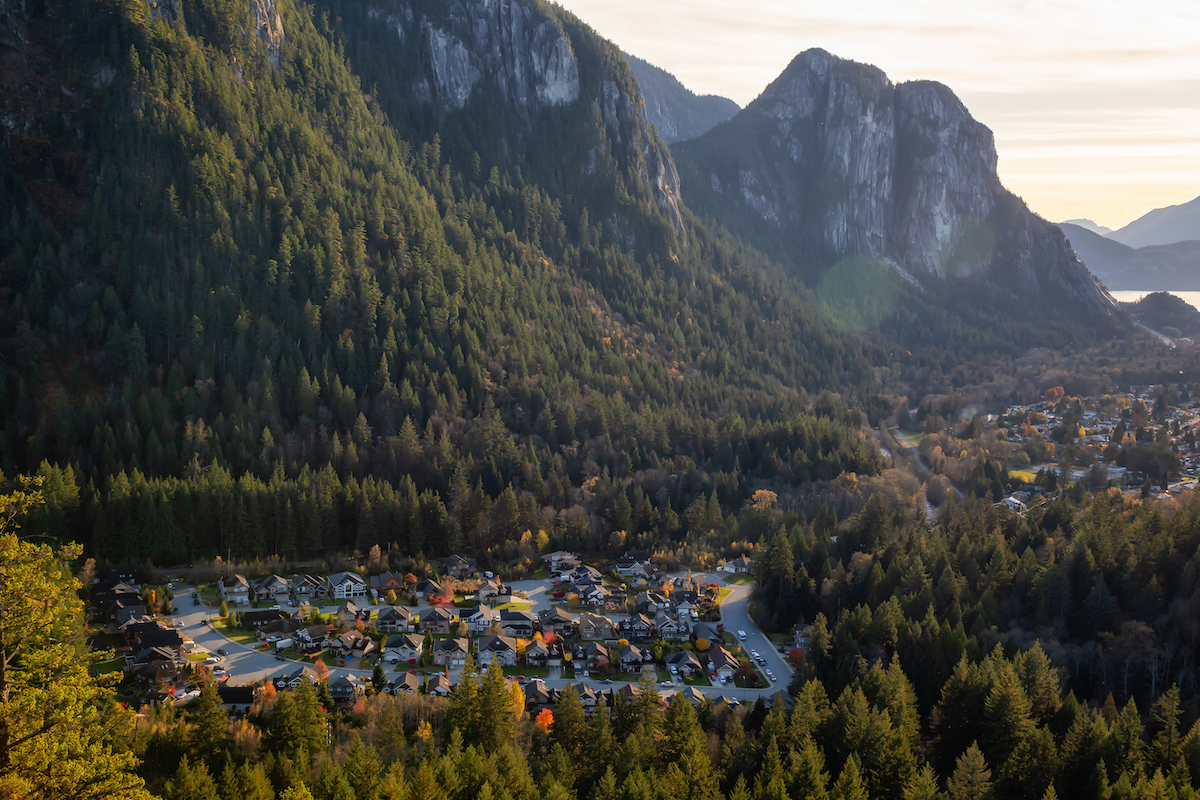The Hiy̓ám̓ ta Sḵwx̱wú7mesh Housing Society, founded by the Squamish Nation Council, has an ambitious goal of providing every member of their community with affordable and culturally appropriate housing. A first project will be launched shortly, and others are already in preparation.
The Squamish Nation has approved a plan to build a series of affordable-housing developments on reserve land in North Vancouver. With shovels set to hit the ground this fall on the first project, a 94-unit housing complex complete with a community garden and a co-operative grocery store, the excitement is palpable.
“We can be close to our families, we can be close to cultural support,” said Sarah Silva, CEO of the Hiy̓ám̓ ta Sḵwx̱wú7mesh Housing Society, to the CBC in August “We want to have a building that reflects our traditional way of living … together like we did in Longhouse where the youth and the elders support each other.”
A longhouse is a type of housing, traditional in some Indigenous communities, that can shelter several families. It is often used to conduct ceremonies and community gatherings.
Founded in 2019 by the Squamish Nation Council, the Housing Society was charged with overseeing the project’s development.
The non-profit’s raison d’être is to, within the next generation, provide affordable and culturally appropriate housing to every Squamish member, after hundreds of years of colonization and genocide that kept people away from their community.
The non-profit’s name is emblematic of its mission.“[It] means ‘the Squamish are coming home,’” Squamish Nation then council spokesman (and now its Chair since September 2021) Khelsilem told North Shore News while announcing the launch of the Housing Society. “The right to housing is something that we really believe in.”
It is especially important to the Society that Squamish people can return home and be able to live, heal and thrive on their ancestral lands.
Affordable housing on the reserve
The Squamish Nation is a group of Coast Salish people who settled in villages in Greater Vancouver, Howe Sound and the Squamish River watershed in southern British Columbia. It has 23 reserves in North Vancouver, Burrard Inlet and Squamish Valley, boasting a traditional territory of 6,732 square kilometres.
Like many communities around the country, the Squamish are dealing with a housing crisis. With a current waiting list of 150 households, families are living in overcrowded conditions while others are forced to live away from the community. It is estimated that at least 650 more units will be needed over the next 20 years.
“There’s just very few opportunities, especially for young people … who are in their 20s and starting to have families of their own,” said Khelsilem.
Due to a lack of federal investment in Indigenous housing in the past, and ongoing land-tenure challenges affecting on-reserve housing, there is limited choice and availability for Squamish Nation members who wish to live in their community.
A beacon of light
Given these ambitious goals, and an urgent need for additional capacity-building, team-building and community-engagement activities, the Community Housing Transformation Centre awarded $49,500 from its Sector Transformation Fund back in 2020.
“With this organizational capacity grant from the [Centre], Hiy̓ám̓ ta Housing [was] able to start to fulfill our mandate of building safe, equitable, and affordable housing that reflects our Squamish values, culture and identity,” says Housing Society CEO Silva.
“The grant has given Hiy̓ám̓ ta Housing the needed tools and structure to get our non-profit off the ground in a good way. We were able to conduct a five-year strategic plan, create an administrative and governance manual and access training. This was all needed work to lay the foundation of our new organization.”
The project also engages community members and Squamish Nation committees in understanding and guiding its work to ensure that both approach and the work of the organization meet the needs of Squamish people and the larger community.
“Hiy̓ám̓ ta’s mandate further responds to this [housing] crisis by adopting a First Nation Housing Authority model, ensuring that our operations reflect sound financial management, good governance, and Squamish culture and identity,” adds Sarah Silva.
Most importantly, a strong Hiy̓ám ta Sḵwx̱wú7mesh Housing Society will act as a model for other Indigenous Nations to develop affordable housing for their community members.
Large-scale project planned
The Squamish Nation council recently approved another development that will create 6,000 rental units in Vancouver, available not only for Squamish Nation members but for all Vancouverites. Touted as “the largest and most prominent example yet of Indigenous city-building in North America,” the Senakw district is comprised of a dozen towers, ranging from 17 to 59 storeys, and will house over 9,000 residents.
The endeavour, a partnership with Westbank Corp., breaks with urban design conventions: Senakw buildings will be “compact, green and dense, bringing public life across the site and below ground,” according to the Globe and Mail.
Although not a community-housing project, there will, reportedly, be provisions for affordable housing for Squamish.
Khelsilem told the reporter that Senakw is “about opening up, and not alienating people. It’s a village feeling, reminiscent of our historical community here.”



